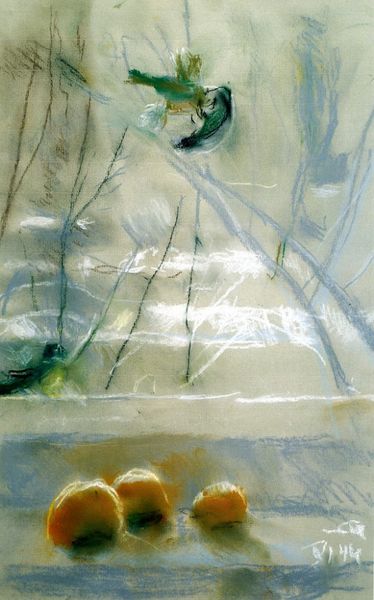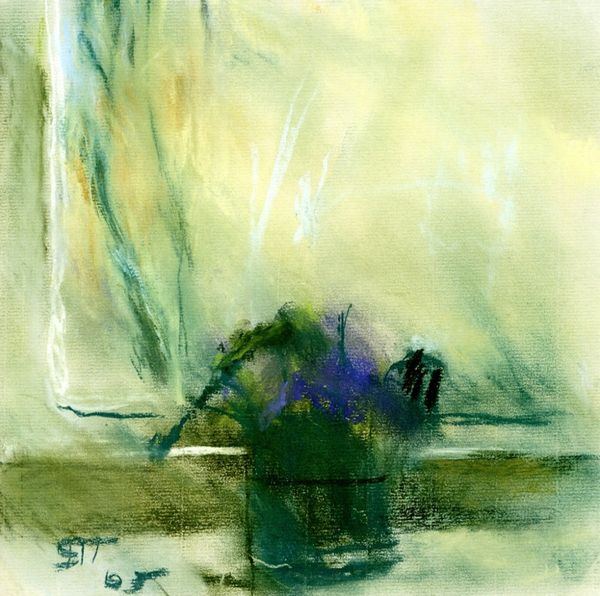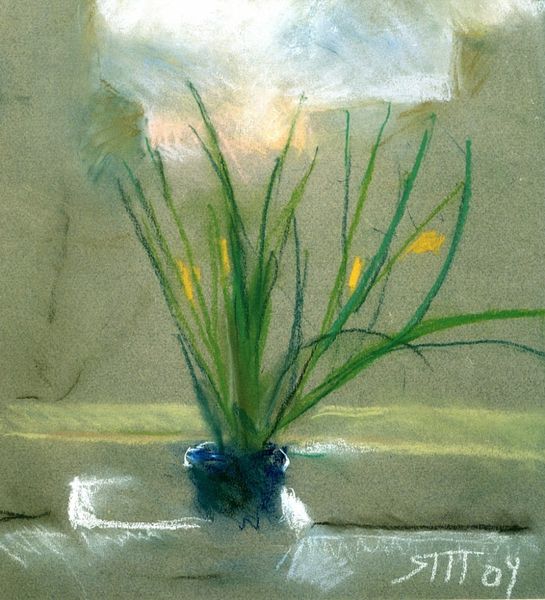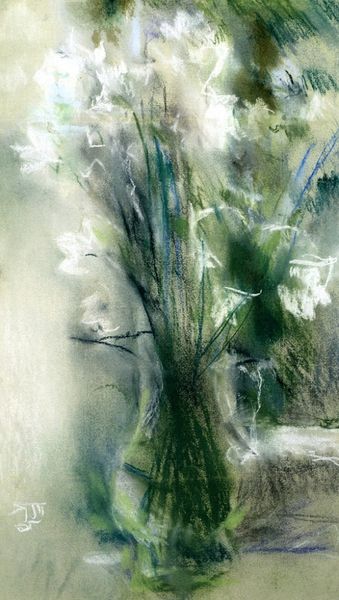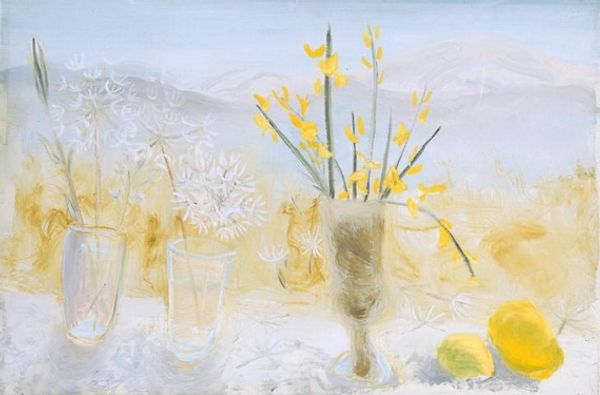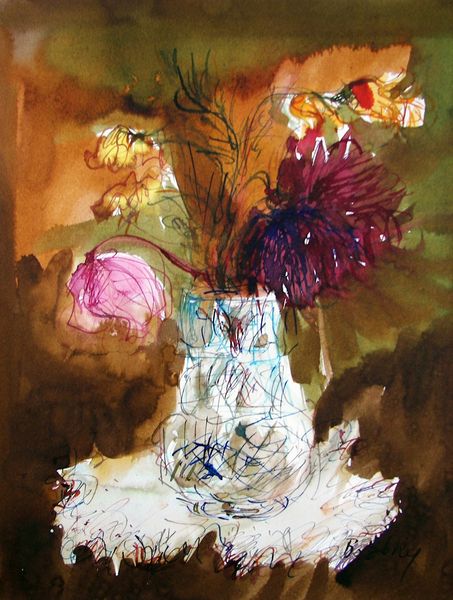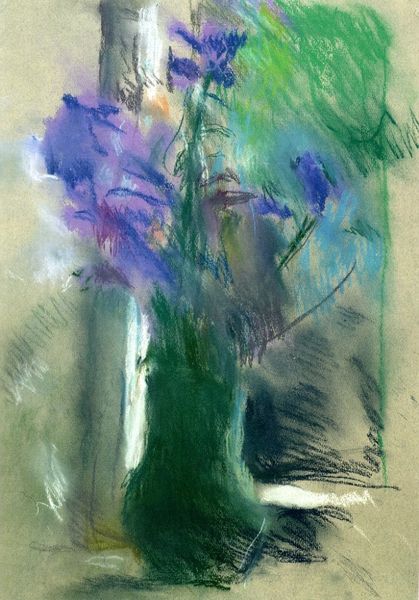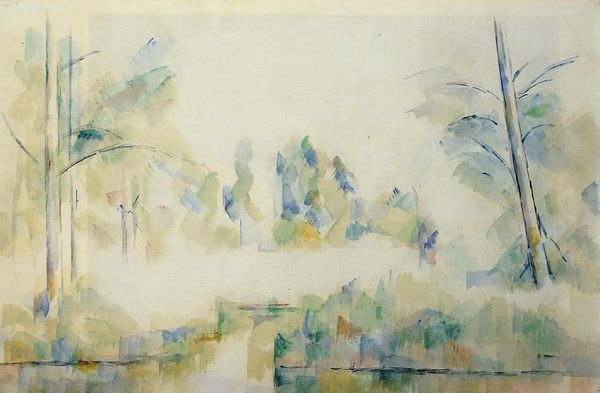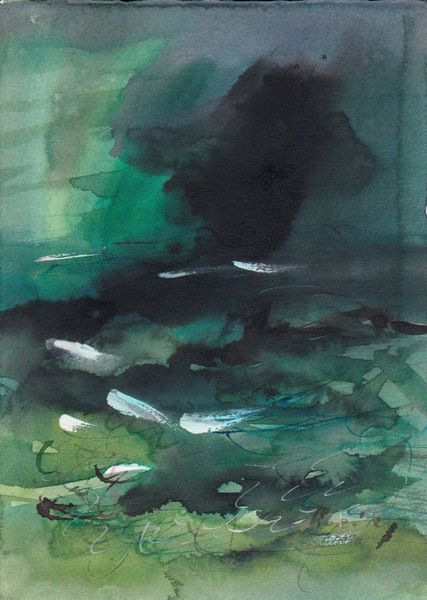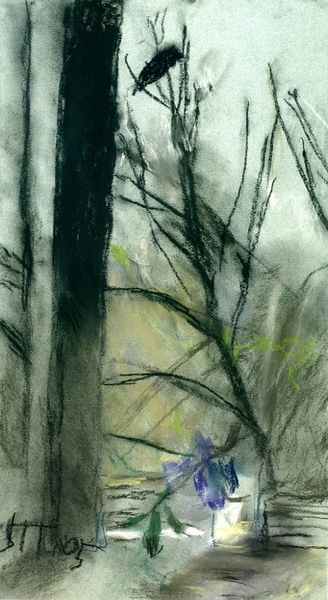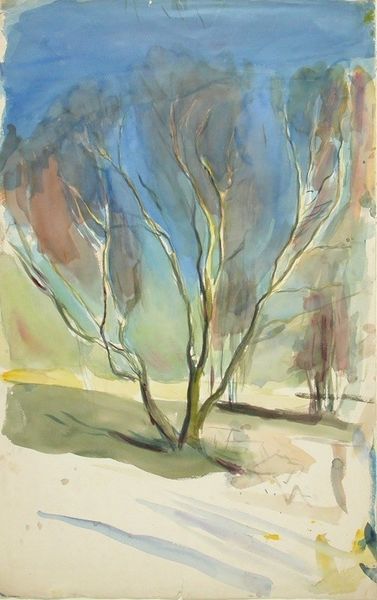
Copyright: Tetyana Yablonska,Fair Use
Editor: So here we have Tetyana Yablonska’s "Apples," from 2004. It looks like it’s made with pastel, or perhaps oil pastel, on paper. The impressionistic style is lovely; there is an evocative looseness about it. I’m curious to know more; what stands out to you in this piece? Curator: I see a fascinating exploration of materiality. The fuzzy, almost tactile quality of the pastels draws attention to the physical properties of the medium itself. Note how the artist layers the pastel strokes, creating a palpable sense of depth and texture. Editor: It does make you want to reach out and touch it. Curator: Exactly. But consider too, what are apples within a socio-economic framework? Yablonska grew up in Soviet Ukraine; did she perhaps consider what access to everyday goods meant, such as fruit? And what does a pastel drawing signify against the tradition of oil painting; who has access to create fine art using different media? Are apples a symbolic substitute for a more readily available commodity such as a potato or other local crop? Editor: That’s a really interesting perspective. So, you are focusing on the socio-political background through materiality? How does the artist's choice to use a seemingly simple medium reflect deeper issues? Curator: Precisely. The choice of pastels – a medium often associated with preliminary sketches or studies – elevates the everyday. The looseness hints at speed and reproducibility, almost like the mass production of printed material such as posters. It makes you wonder: Is it a readily made and available material she’s using on purpose, in an effort to eschew established "fine art" practices? Editor: I hadn't thought about it that way. Looking at it now, it feels like a comment on accessibility. Curator: Indeed! And this perspective shifts the still-life genre away from mere representation toward an active engagement with social and material conditions. It reframes how we understand the meaning and the purpose of the art object. What do you make of this revised assessment? Editor: It makes me see beyond the surface appeal and consider the broader context. This changes everything about how I view still-life painting. Curator: It all starts with what the objects are made of.
Comments
No comments
Be the first to comment and join the conversation on the ultimate creative platform.
